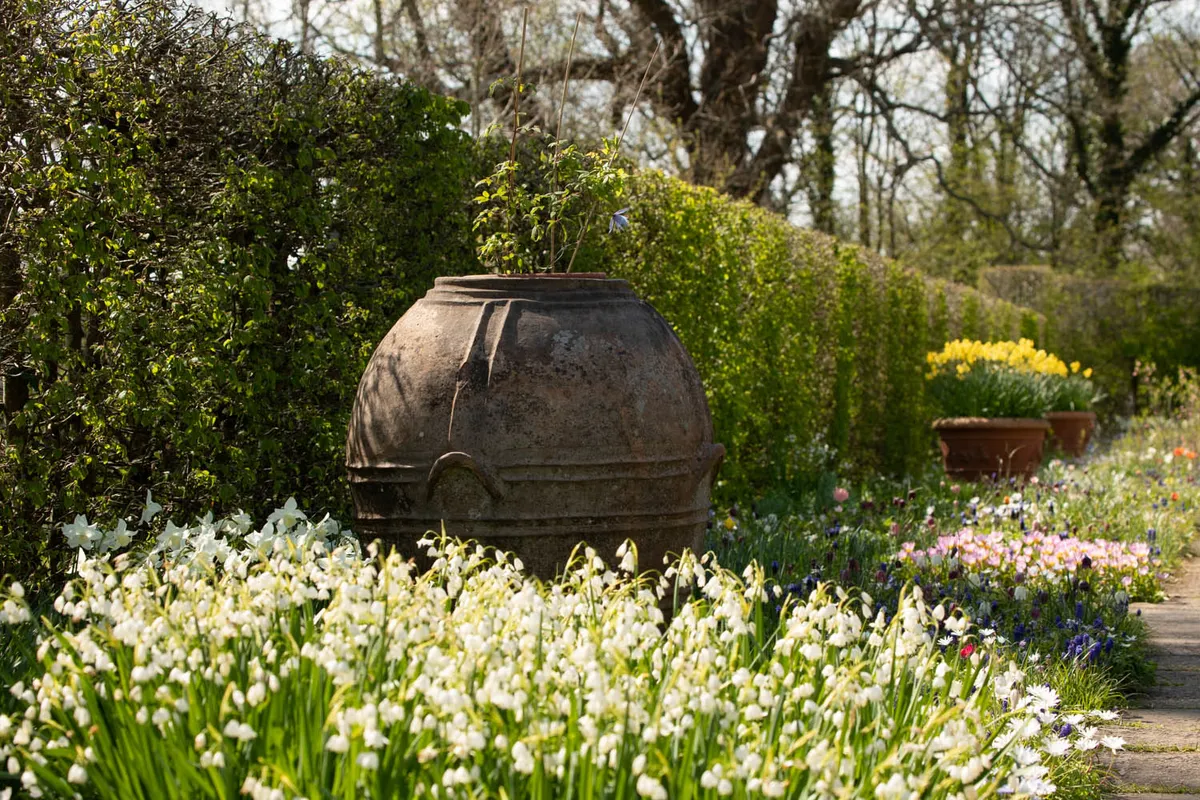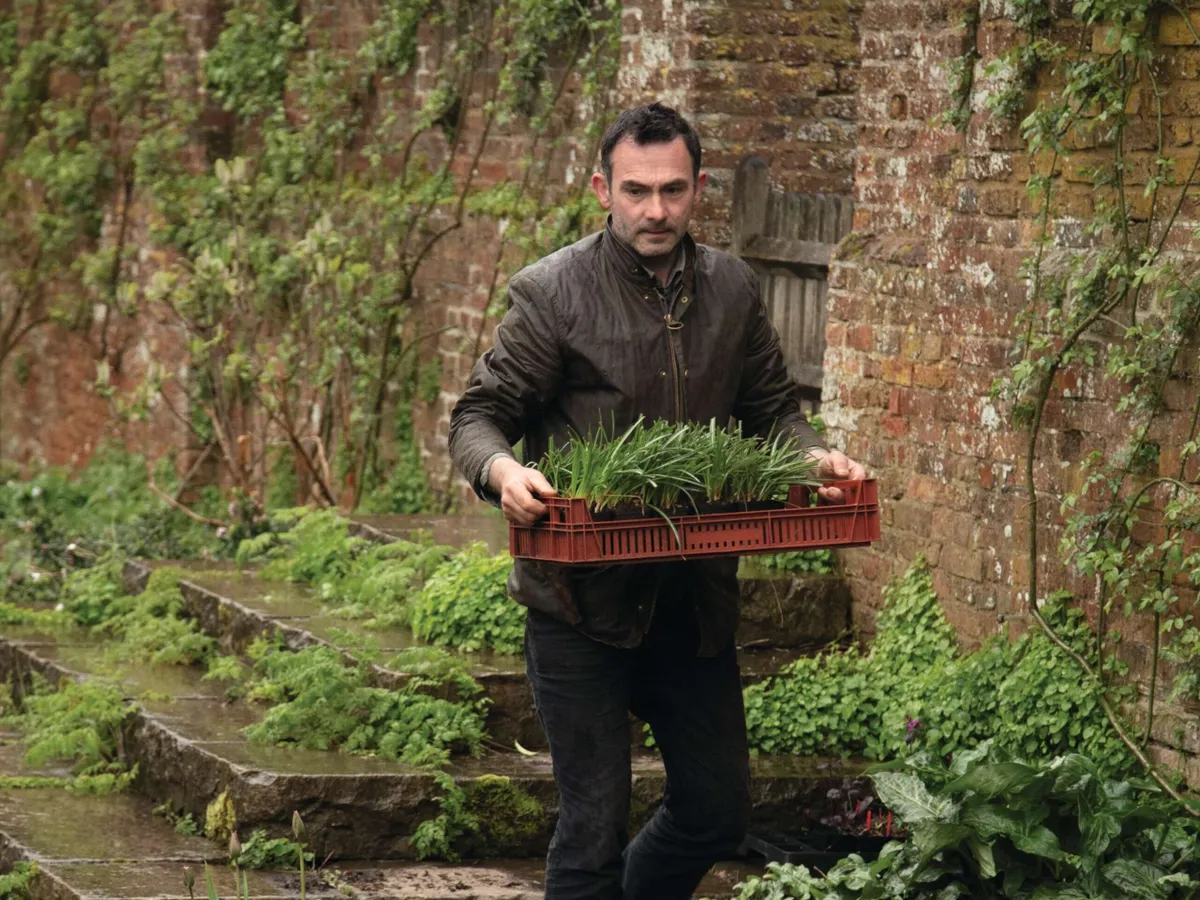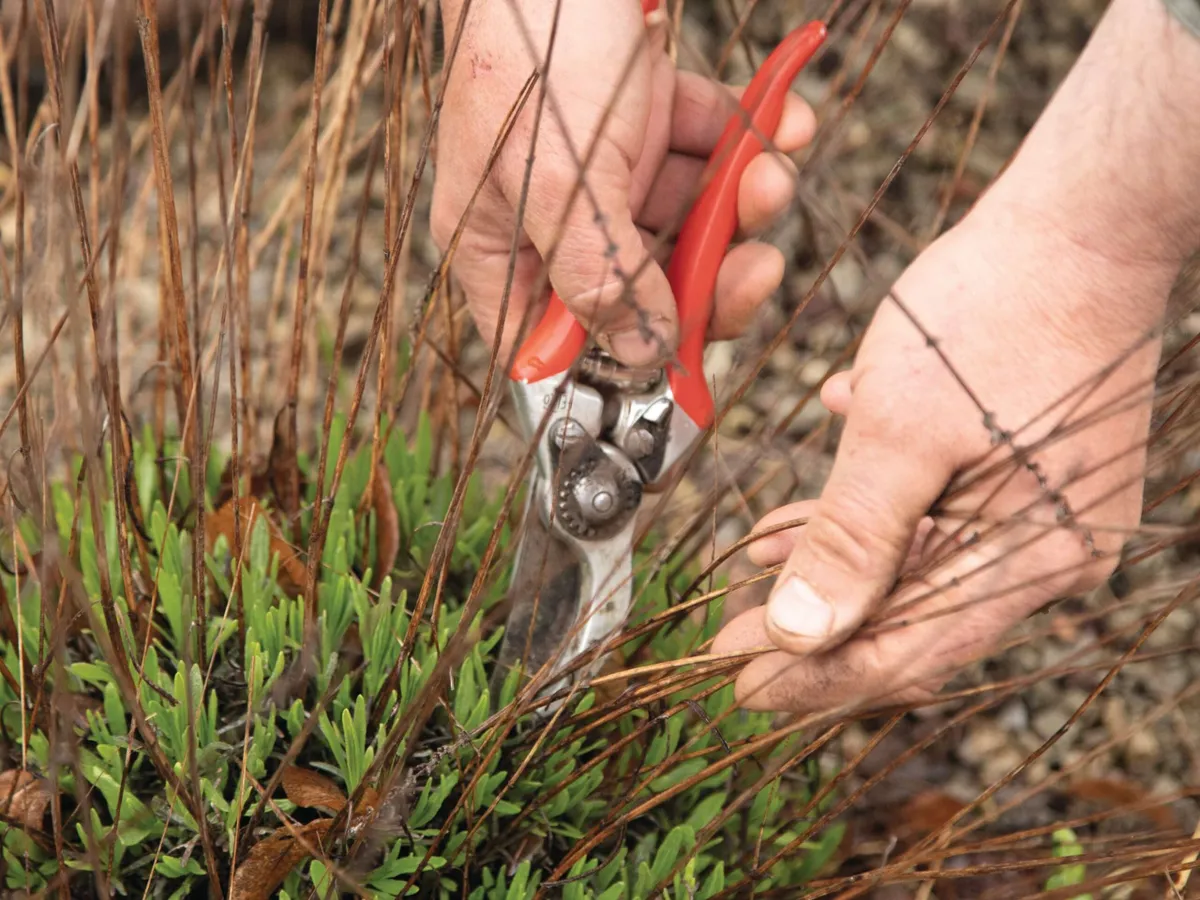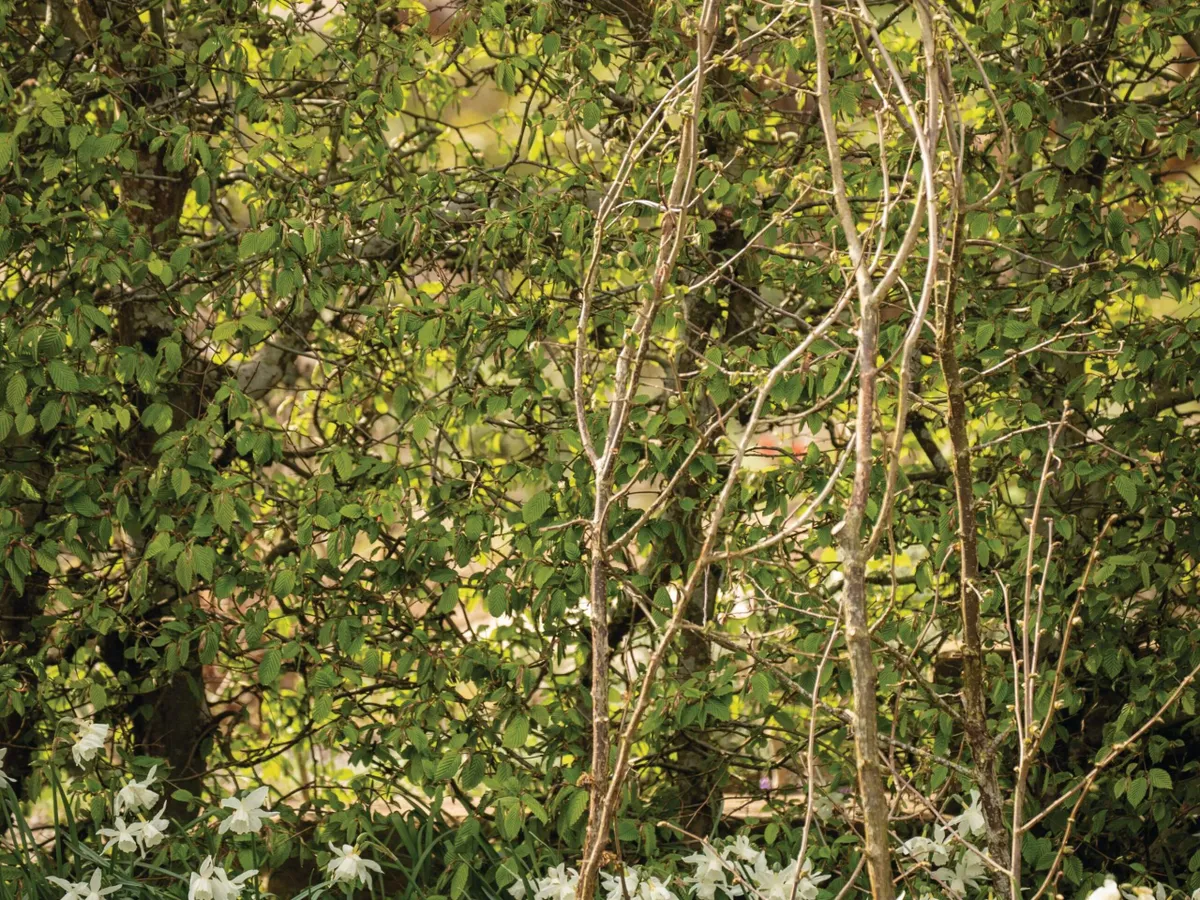Early spring can be unpredictable and cruel. At one moment, the flooding of sap-swelling buds and unfurling leaves feels like spring, and in the next a blanket of snow carried on searing cold winds from the near continent can cover the garden like a duvet, plunging it back into winter. Flexibility is key. I have several tasks ‘on the go’ at any one time and freely switch between them if required to do so by a change in the weather.
You may also like
- Exclusive GI Reader Day at Sissinghurst
- 15 of the best roses from Sissinghurst
- Troy Scott Smith on his vision for Sissinghurst
- Ideas for a white garden
- Troy Scott Smith on not watering at Sissinghurst
Six key gardening jobs at Sissinghurst in spring

Rose spraying
With a goal to garden in a more responsible and sustainable way, we decided some years ago to stop using synthetic fertilisers and chemicals. As an alternative to chemical spraying, we now spray our collection of once-flowering, old roses with a mixture of essential oils, including mountain savory (Satureja montana), tea tree (Melaleuca alternifolia), thyme (Thymus serpyllum), clove (Syzygium aromaticum) and orange (Citrus sinensis).
Dilute 0.2ml of each in 10ml of rapeseed oil and 3ml of Castalia black soap. Mix this base in one litre of water with a pH level of 6.5-7. Our first spray is generally in early April as the new foliage begins to break and thereafter we continue twice a month until October.
Planting edits

An essential part of the profusion of Sissinghurst is the carefully contrived yet apparently spontaneous and informal way of growing plants. We continue the planting style of Vita Sackville-West – romantic yet practical, experimental but traditional. Through the year, I continue to cultivate the best of Sissinghurst’s traditions, making comments in a notebook, titled (tongue firmly in cheek) ‘Great Thoughts’. I note what’s looking good, what should be changed, tweaked or removed completely. In autumn, but more often in spring, we refer to this book to make the necessary planting edits for the season ahead.
Pruning tender and wall shrubs

Although much of our pruning, particularly roses, is carried out through winter, we delay pruning tender shrubs or sub-shrubs until the risk of severe frost has passed, usually around mid-March. Most of our tender pruning is on Delos, with lavender, santolina, phlomis, sarcopoterium and salvias all pruned now. Also in mid-March we prune and tie in various wall-trained shrubs such as solanum, myrtle, abutilon and Magnolia grandiflora. Finally, on 1 April we prune our wall-trained figs, bending the long, one- year-old shoots into swirls and loops and securing them to wires fixed to the wall.
Peony supports
I’m experimenting with a ‘new’ method of peony staking. The idea developed from the way in which we bend down and secure the long, pliable rose shoots on to hazel rods. I wanted to mimic the rotund shape of the rose domes, by creating smaller-scale cages or lattices of hazel around the peony groups, in which we could support the flowering stems as they grow through. In addition to looking good, I hope this method will avoid the delicate peony roots getting damaged by conventional staking, which relies on pushing supports in among the roots.
Watch Troy make his peony supports in our video:
Sweet pea supports

I love sweet peas – they are so generous in their flowering and keep going (if regularly picked) for such a long time. We sow ours in mid to late October, with the aim of hardening them off and getting them planted by the third week of April. In preparation, we ‘build’ sweet-pea wigwams of hazel, using three well-branched stems around 2m in length to create each wigwam. Prior to planting (six peas per wigwam) we enrich the soil using our home-made bokashi compost. This provides both the nourishment and water-holding capacity that the peas need to keep flowering.
Growing plants in paving
Vita Sackville-West dreamed of having a stone-paved courtyard, the cracks colonised by ‘lakes of Aubretia, bumps of thrift, mattresses of yellow stone-crop, hassocks of pinks and rivulets of violets’. Where we can, we try to replicate this philosophy by sowing things, quite recklessly, in even the narrowest of cracks. We try those plants that would naturally self-seed, such as aquilegias and fleabane, which I recently sowed at the garden entrance, but also sometimes bulbous plants, such as miniature Iris pumila or the small narcissi. I say recklessly, as a lot will not strike or be trampled, but those that survive, their roots seeking out the cool reaches of the soil beneath, will live long and be protected from the extremes of heat and wet by the paving.
